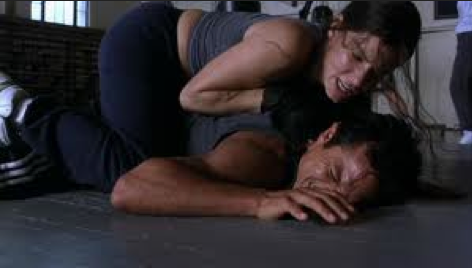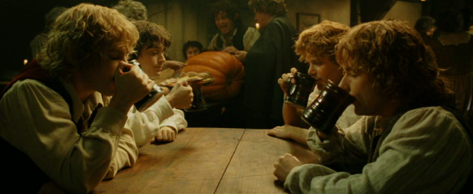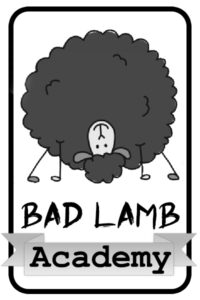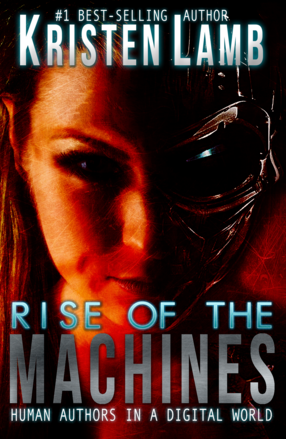To give characters depth, we have to be people-watchers. Study people. Know thyself. I strongly recommend reading books on psychology as part of research. For instance, I read a lot of FBI books on profiling.
As writers, characters need some amount of consistency without being predictable. If there is some deviation from the profile, there must be a good reason WHY, other than we need a character to act a certain way to move our story forward.
For instance, the shy librarian who rescues spiders cannot suddenly gouge out the eyes of a guy mugging her unless we can offer a reasonable explanation for this deviation from archetype. I.e. She could have been raped and left for dead as a teenager. Yes, she remained shy and soft-spoken and true to her character…until circumstances brought out that wounded part who was capable of going for the eyes.
Today I will focus mainly on the protagonist, but you simply reverse this for the antagonist.
Every Strength has a Weakness
One key factor we must appreciate is that every strength has a flaw. A loyal person is noble, but they are also often naive. A strong leader gets the job done, but often is a control-freak who fails to rely on a team and sucks at delegating. A tender-hearted person is kind, loving, but often used.
Part of creating conflict is to place the character in situations where the strength becomes a fatal flaw. The character’s arc is to learn to address this flaw and change.
In my current novel, the character is bubbly, likable and loyal. She is also naive and that is why she’s initially taken advantage of and used to take the fall for a massive Enron-like scheme.
Often, the inciting incident creates a personal extinction. What the character believes about her world and those around her evaporates. The plot problem serves to bring the protagonist back into balance, but as a better, New and Improved version.
We all want homeostasis. We want our old life back, but often that old life wasn’t good for us. THIS is what your plot will reveal to your protagonist.
In Legally Blonde Elle Woods must learn to see people for who they really are. She is naive, but underestimated (she even underestimates herself). People assume she is a dumb Pollyanna, but they miscalculate that Elle will be tested by fire and change. They assume, wrongly, that being bubbly and sweet=stupid.
THAT is the flaw that brings the victory. Remember, the antagonist who took advantage of the initial weakness is counting on the character failing to learn and grow, and this will be their ultimate undoing.
In Miss Congeniality, undercover Gracie Hart is a tough hard-@$$ who is such a control freak she cannot rely on her (very capable) team. This costs them a major bust at the beginning of the movie and lands her in her version of hell–going undercover as the very type of woman she despises.
Gracie suffers personal extinction. She cannot be the belching woman in comfortable shoes who arm-wrestles for who’s going to buy the next round of beers.
She has to face her scary place—her femininity and being vulnerable. She also has to learn to rely on others for help and it is the story problem—being thrust into a world of girly-girls—that makes her evolve as a human being. The very women she initially despised ironically hold the keys to her personal growth and thus her ultimate victory.
She loses nothing of the take-charge bad@$$ that makes her who she is, but it’s a far better version…in heels. Again, the opposition underestimates Gracie’s ability to face her demons and change.
In Lord of the Rings the Hobbits are naive, sheltered and childlike. We see this early on when Merry and Pippin break in to hijack some of Gandalf’s fireworks. The discovery of the Ring of Power is what creates the personal extinction—getting out into the scary world full of bad stuff that lies beyond the Shire.
There is almost an unspoken societal rule. Hobbits don’t LEAVE the Shire. They stay in Happy Hobbit Land and believe the bad will stay away.
Problem is, in order to destroy the Ring of Power, the Hobbits have to grow up. They can’t light fires for a midnight snack when dark undead kings are after their heads. The very characteristics that make them the most immune to the influence of the Ring—their good hearts, their childlike ways, their innocence—must be tempered and eventually sacrificed for the good of all.
My favorite scene (and I cry every time) is at the end of Return of the King. The same Hobbits from the beginning are back in having a pint, but rather than dancing and singing like all the other Hobbits, they huddle at a table and no longer speak. They left The Shire as boys and have returned war-weary men who gave up their innocence so the world would be saved.
It is Sauron’s gross underestimation of the Hobbits that is is ultimate undoing. He fails to ever even see them as a viable threat. Yet, had the Hobbits NOT been able to rise above their natures, they would have all died in Book (Movie ) ONE. It’s their ability to grow up and lose their innocence that saves the world.
Thus, when looking at your characters, look to what their best qualities are…then what are the dark sides of those traits? The inciting incident obliterates what the person believes about who they are.
What is the other side of the personality trait? How can you harness this to put your protagonist into tough spots that goes against their nature and forces change? Who can you pair that character with to create the most friction?
In Miss Congeniality she is no longer in charge and gets waxed, tweezed and forced to walk in heels. She’s shoved out of her comfort zone and she resists with all she has because she wants things to go back to the way they were. BUT, if the protagonist regresses, the story problem will not be solved. Bad guys win.
TOO PERFECT CHARACTERS ARE BORING.
Always remember that bad decisions are the beating heart of great fiction.
What are your thoughts? I try to use a blend of movies and books because it’s easier for more people to get the references, but what are your favorite instances of character arc? What do you struggle with?
To prove it and show my love, for the month of April, everyone who leaves a comment I will put your name in a hat. If you comment and link back to my blog on your blog, you get your name in the hat twice. If you leave a comment, and link back to my blog, and mention my book We Are Not Alone in your blog…you get your name in the hat THREE times. What do you win? The unvarnished truth from yours truly.
I will pick a winner once a month and it will be a critique of the first 20 pages of your novel, or your query letter, or your synopsis (5 pages or less).
And also, winners have a limited time to claim the prize, because what’s happening is there are actually quite a few people who never claim the critique, so I never know if the spam folder ate it or to look for it and then people miss out. I will also give my corporate e-mail to insure we connect and I will only have a week to return the 20 page edit.
At the end of April I will pick a winner for the monthly prize. Good luck!












60 comments
12 pings
Skip to comment form
I love reading your posts – the tips, suggestions and such are invaluable resources but it crossed my mind today to ask – why don’t you promote your fiction here? You might drop a hint to a “work in progress” but I don’t think I’ve ever read where you came right out and named your published works of fiction. To the interwebs I go, I really would like to read your fiction as your non-fiction rocks :-). Thanks for lighting the way.
Author
I have a fiction short that will be released. The novel I am referring to is going to be finished this week (first draft). Goal is to have final version by July. Once it’s published, I will certainly tell y’all where to find it. Been focused so much on social media books that I’d gotten away from my first love. BUT this was a crucial time for writers, so I was happy to put the fiction on the back-burner to help you guys be prepared for all the changes.
Now I am in a place where I seem to be able to do both, so that’s pretty cool. THANK YOU!
Well, never one to rush one’s creative process…but um, Hurry Up with the fiction already ;-). sheesh.
As always, your blog post is wonderful and helpful. I write mystery and suspense novels, and understand the importance of multi-dimensional characters.
Fantastic examples! I adore Legally Blonde and Miss Congeniality (though I’d be fine never seeing their sequels again). I don’t tend to think about characterization in these terms, but what you’ve said fits my own characters, and I think I’m drawn to characters in other people’s work who overcome themselves in exactly these ways. I do admire a character who overcomes external circumstances, but if that’s not mirrored by an internal struggle, it feels like something is missing. I’ll be more conscious of this in the future, thank you!
I re-tweeted.
Really great post. I absolutely love torturing my characters, forcing them outside their box of comfort and watching them grow!
Have you ever written a post on how a first time author goes about getting published?
I think I struggle with making the character arc smooth. When I go back and read what I’ve written I see holes in my character’s personal story. That’s why we edit, right!
I also think The Poisonwood Bible demonstrates character arc pretty well.
Great post! You’ve supported my feelings about my stories! Thanks!
The trick is, I think, to know when to stop, before your archtype turns into a stereotype. (or a cliche)
oops … archetype!
“Driving a wedge in the crack” is the antagonist’s job. Turning that chink in the hero’s armor into a gaping hole that the hero has to deal with and overcome. Defining that weakness up front helps the story telling, no doubt.
Fabulous post, as usual. I use Caroline Myss’ archetype cards to help with the light and shadow attributes of characters.
Love the post. Great examples. I love reading about archetypes, but I generally don’t think about what archetypes my characters are until I’ve written a bit and have gotten to know them. Then, applying archetype characteristics can help the character become more three dimensional.
Fantastic post – very helpful 🙂
Wow… this blog has me wanting to go through all of my different protagonists and map out their characteristics and weaknesses that come with them. Thus, making me want to rewrite a couple stories. Why must you do this to me? 😉
It seems kind of ridiculous now that I think about it, but I’ve never really thought about the way my protagonists view themselves at the beginning of a story– not in a positive sense, at least. Call it a throwback to an age of low self-esteem, but I tended to think more about what they were lacking than how they were strong.
I may have to go back and rework a few things now…
I love Miss Congeniality. I can quote it pretty much verbatim, which may be sad, but true. I think the Breakfast Club is probably the best (80s) version I can currently think of. All 5 characters have to grow to understand each other and move forward in life. Currently, I think Ally Carter’s Gallagher Girl’s series is great for characters that need to change and grow, starting with Cammie the Cameleon’s invisibility.
“Bad decisions are the beating heart of great fiction.”
I agree, but I would add a qualifier to this: “…providing there are reasons for the bad decisions.” I hate stories where the main character (or others) make bad decisions for no apparent reason or contrary to good reasons.
Great stuff, as usual. The examples are terrific. I will be posting the link on my blog this week.
I earned my degree in psychology and went on to grad school with the full intention of becoming a profiler. I did my internship in the forensic unit of a state hospital and trained with both FBI and NCIS profilers. Ultimately, my sensitive/creative soul couldn’t survive the constant exposure to the dark, evil doings of some people despite my intense curiosity of the walking puzzles these people were. For a long time I looked at my walking away as a complete failure and waste of my education. When I became heavily involved in theatre and writing, I realized it was all preparing me for something I was better suited for.
You’re right about everyone needing to study some psychology to help create multi-dimensional characters. More great advice from you. I look forward to reading your fictional work when it’s published.
I wonder if this applies when your story doesn’t have an hea? Does this lead to a series arc rather than a stand alone?
Author
Everyone arcs. When they don’t it’s boring fiction. Even if they arc downward to accepting that life doesn’t turn out HEA.
You always have such great advice. I especially like this one about profiling characters. It helps me to know each character intimately. This way I know how each one will react in different circumstances, and how to shake them up a bit. One dimensional characters are truly boring.
Last week I attended a National Writers Series presentation “An Evening with Gillian Flynn”, author of Gone Girl. What really stood out for me was her connection to the characters, as though they are real people. She described how she would write scenes through the eyes of a kindergarden teacher, or a mom, or a best friend, not to include them in the book but as an exercise in getting to know her characters, to really understand them and be able to portray that complexity. That’s real dedication to your craft but it’s also a handy tip! If you’d like to read more on what Gillian had to say visit me at http://www.vickipaulus.blogspot.com
P.S. – I’ll be posting your link on my blog:)
This is a great post. I love the character arcs of all these characters, but I have a soft spot in my heart for the hobbits (as I, too, enjoy second breakfast). I retweeted, but I have no clue how to link blogs. I wish I did. 🙁 Thank you for the valuable information.
After writing for a couple of years I now watch movies with a new eye and look at the characterization, the development and motives within the story, the underlying plot. I know it’s easy to watch a show and get carried along with the action. My wife shakes her head when I start rabbiting on about something that doesn’t gel or is stupid. (it’s an old guy thing). I guess it’s the difference between flicking through a magazine and actually reading it.
When it comes to my own characters I make sure they have feet of clay. People aren’t totally good or bad, there are the various shades of grey in between. I had the ‘good fortune’ to have been a police officer and a prison officer, it gave me a huge slush-pile of characters to choose from. Also a wealth of information on how the criminal mind works. When you get to work with people on a daily basis and observe them closely you tend to soak up the vibe. So what did I learn from all of this? Even the very best of us have secrets, foibles, needs and desires and the worst of us got to where they are from their life experiences, environment, upbringing etc. I believe very few of us are born bad. I have a great time deciding what my characters will be, do, feel, and how they will stuff their lives up.
Cheers
Laurie
top notch stuff, Kristen. Saved this one.
This goes a few steps beyond Wendig’s “torture your characters” advice into HOW to torture them, and why, too.
I do want to work harder on developing my antagonists, too, and maybe utilize them to make some of my points just as I utilize them to get my protagonists to their own revelations. This will help.
well done
Your lesson today was well done. Thank you.
Some interesting posts as well.
Love this article. Very good point
This is one that I’ve already implimented with my characters, but the great, to-the-point way you explain it helps me to think of other ways to enhance the mulitdimentionality (is that a word?) of my characters. Thanks! 😀
Another character that I can think of off the top of my head (because I have 2 little boys), is Lightning McQueen (or Dr. Benjamin Stone from Doc Hollywood, whichever lol). A very successful, popular, hot shot, who moves so fast, he doesn’t even know how to make a real friend. When he is finally forced to slow down, he learns the real values of life. 😀
Great post, thank you. I was just thinking about the very subject myself today.
“characters need some amount of consistency without being predictable.” I try to watch it or read it with thought in mind.
“Today I will focus mainly on the protagonist, but you simply reverse this for the antagonist.” – New, like addition and subtraction.
“The Shire as boys and have returned war-weary men who gave up their innocence so the world would be saved.” Or they were told that the ritual was made up a long time ago and nobody really knows the true reasons it was added by the original members and to try to figure it out afterwards. Ohhh, the three kings were looking for their king like the Knights of the Round Table were looking for a new King Arthur. It makes sense to me. I was not their king so I left and I do want to associate with them today. They wanted a slave to do their bidding and not a true king.
“A Man Each A Man!”
Of course you will have those that say, what if we elect a bad president? Good thing I write fiction. My fictional world will be fine. I like happy endings.
Reblogged this on "CommuniCATE" Resources for Writers and commented:
Another awesome post from writing coach Kristen Lamb. This is a must read!
Thanks for the tips on characterization, and especially for the examples you used. Fun! 🙂
Excellent examples, Kristen, and I need to get my hands on some FBI profiling books, esp. since I love delving into the psychological reasons for why my characters act the way they do. But you’re so right–if they step OUT of character and do something unexpected, the reader needs to know the setup as to WHY.
Nice post, as always 🙂
I think that as writers, we like to think of our protaganists as perfect individuals, when they are anything but. Perfection *is* boring. I don’t know though, I don’t spend a lot of time thinking about what weaknesses they have, but just writing what they character and individual will do in a written situation, even if it means that they make an epic mistake, or trust in the wrong people.
Fascinating, Kristen – thank you! My boss would hate you, though, because I read the first sentence at work, and then got lost in an hour’s worth of character (re-)plotting…
Reblogged this on solmasol's Blog.
Reblogged this on Cynthia Stacey and commented:
Awesome article every writer should read
Fantastic insights, as always. I wonder if I’ll ever simply watch a movie again, though, without analyzing it. 🙂
This one might be out of left field, but the cartoon series The Last Airbender handled the development of its characters amazingly well. Over the arc of the multi-season storyline the main character Ang grows from a naive child into a responsible adult. (Many of the characters grow and evolve through the story.)
Ang doesn’t lose that core of innocence that defines who he is – he incorporates it into a new, more responsible version of himself. Don’t watch the live-action movie – I can’t stress that enough – but the animated series is extremely well-written.
Kristen, I love that you realize books are not the only place to find great stories. It is very true. As people have evolved our tools have evolved with us. We still have that age old love of drama and the sense of connection that we get from a well-told tale. We just have newer means of sharing those stories.
Thank you for sharing this. I am a student at present but I dream of becoming a writer some day. I write poems and my teachers say that they are good enough but I don’t know if anyone is interested in reading or even publishing poetry. When I finish my studies(science), I wish to take up a course in literature and refine my writing further to be able to write a novel. 🙂 🙂
Excellent advice here and excellent explanations. Just what I needed for my plotting 🙂
Great post. I find this problem a lot when I judge Inspirational fiction. The protaganist is always so nice just because he/she is a Christian. There’s no way for them to improve. That leads to that saggy middle problem every time.
terrific post! I’ve shared it on Newsana, a news-sharing website, where it’s been voted into the top 5 Books stories: http://www.newsana.com/books/story/2013-04-29-ways-to-create-multi-dimensional-characters-tip-1
This is something I have really been struggling with after realizing that my characters were all pretty flat and that my favorite characters in movies and books were the complete opposite of “perfect protagonists.” George R.R. Martin’s A Song of Ice and Fire has become my example for complex characters. Jaime Lannister is pretty much as bad as they come but he soon won me over—while never sacrificing his character traits, instead as more was revealed to him and he reached “character extinction” all of my preconceived notions were blown apart.
Loved the LOTR references–I’m a big fan!
Great movie examples for demonstrating character growth. The scene in Lord of the Rings that makes me cry is when Aragorn is crowned and sees the four hobbits bowing to him. To which he replies: “My friends. You bow to no one.” Then he and everyone in Minas Tirith bows to the hobbits.
I love your blog post and I do agree with what you say. There were even a few things that I had to remember and re-think it!
I then tried to let my characters wander through my head and hope they’re how they should be.
Reblogged this on Romance Reborn and commented:
I’m delighted to reblog brilliant tips from Kristen Lamb, on creating fictional characters. Kristen always seems to have her finger on the pulse of what writers need to know! Invaluable advice.
In LOTR they just sit until Sam goes after (and gets) the girl that he’s always wanted but would not have pursued without his journey with his friends. He remains Sam but a stronger happier version.
And Legally Blonde is one of my all time favorites. It inspired me to ho back to school and be myself. She kicks butt.
What books on FBI profiling do you recommend? Any titles?
This is such a great post. I love the idea that the main strength can be a fatal flaw and the main weakness can save the day. Thanks for such good pointers.
Reblogged this on quotidiandose and commented:
I thought this was a very good article. As always Kristin gives sound advice.
“A strong leader gets the job done, but often is a control-freak who fails to rely on a team and sucks at delegating.”
That post was utterly fascinating. It is an interesting twist if a strength in one situation can be a weakness in another. I thought of an example. Christian Grey is my favorite character in the 50 Shades of Grey trilogy, by E. L. James. He has an amazing character arc. He starts out as being one with a lot of ambition and control. The article quote at the top fits him very well. I have never seen Ms. Congeniality, but your description reminds me of him. Christian’s strengths are being hugely successful at business management and filthy rich. His major quirk is the bondage fetish, that many fans talk about. Christian’s story began when he meets Anastasia Steele, the protagonist. He was attracted to her, so he tried to court her. He was so controlling and cold, that he temporarily drove her away. Then Christian had to learn and change as a dynamic character. He learned that his ways needed to be tempered with kindness and love. He becomes a more balanced. Although he remains wealthy, he was caring and protective for his new family. (but not overprotective)
“One key factor we must appreciate is that every strength has a flaw.”
I came up with the same conclusion, while studying psychology. I am particularly fascinated with personality. Eventually I read the main book for the Enneagram. It was such a good read, I devoured it. The interesting part I come for is the variety of nine types. Each type has strengths especially with a healthy balance. Each type also has a weakness, especially when unbalanced. When the weakness is powerful enough, it leads to insanity. This is a darkness that I am not used to. But I stayed for it, and it helped me make mind-blowing insights of the psyche. In a nutshell, I understood that a healthy and sane person has all personality traits to some extent. That doesn’t mean such person is perfect. This brings an interesting interpretation to Christian. His Enneagram type is 8. In a worst case scenario, he could turn into a sociopath. I don’t think he ever goes that far, but he was still very bad. Over the course of the story, Christian develops into a healthier state, while retaining the strengths of his type. I can imagine how this could expand. Characters of all types, could go through the journey of balance. I can even match the examples of the article to types. A strong leader is an 8 of course. A loyal person is a 6. A tender-hearted person is a 2.
Great post. Thank you so much for the tips. I have to go hunt for FBI profiling books now. 🙂
Reblogged this on The Compass Locket.
Thank you for this post. I had the general idea for multidimensional characters, but needed more info. This helped a ton
[…] Ways to Create Multi-Dimensional Characters–Tip #1. […]
[…] we started talking about ways to create multi-dimensional characters. It’s tempting for us to create “perfect” protagonists and “pure evil” […]
[…] Ways to Create Multi-Dimensional Characters–Tip #1 […]
[…] Lamb has not one, but two tips for creating multi-dimensional characters. Once you have those characters, Mary Kole […]
[…] Ways to Create Multi-Dimensional Characters–Tip #1 […]
[…] […]
[…] […]
[…] Lamb has an easy-to-follow post on the yin and yang of your characters. You can have a good character (or bad) and you must find […]
[…] Ways to Create Multi-Dimensional Characters – Tip #1 by Kristen Lamb […]
[…] One key factor we must appreciate is that every strength has a flaw. A loyal person is noble, but they are also often naive. A strong leader gets the job done, but often is a control-freak who fail… […]
[…] Lamb has an easy-to-follow post on the yin and yang of your characters. You can have a good character (or bad) and you must find […]
[…] characters is to people watch and take notes. In doing so you will quickly discover what Kristen Lamb discusses on her blog: every strength has a weakness and vice […]